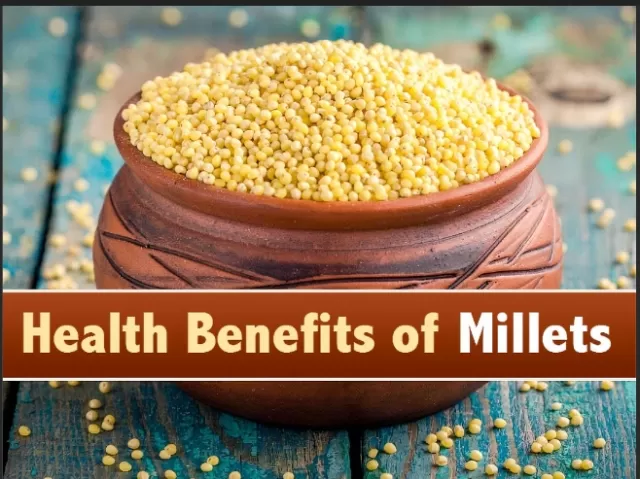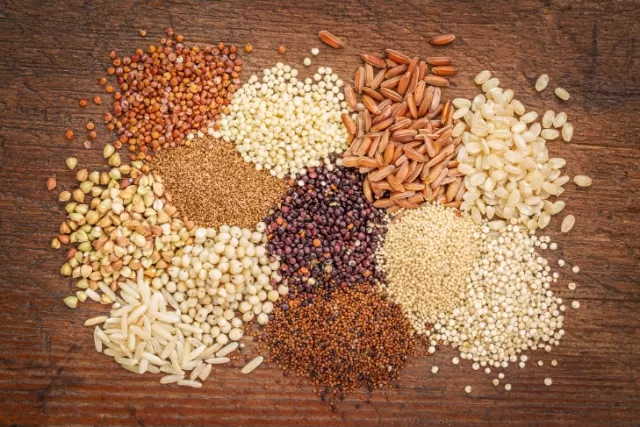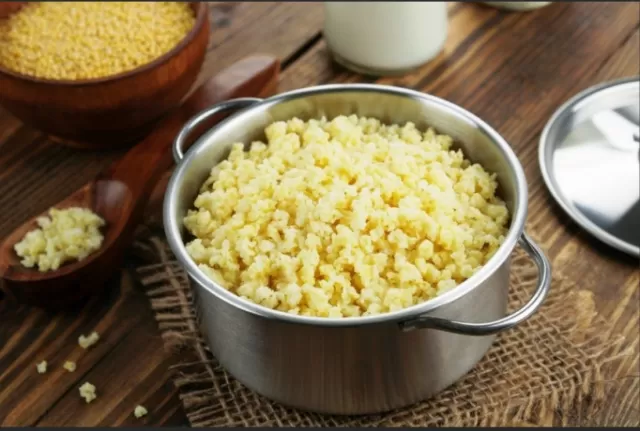Unveiling the International Year of Millets.In a significant move, the United Nations has designated 2023 as the International Year of Millets, placing a spotlight on these versatile grains and their profound cultural and nutritional importance. But why have millets earned this dedicated year of recognition?
Millets have long been integral to indigenous cultures, particularly in sub-Saharan Africa and Asia, where independent farmers have preserved the tradition of cultivating and consuming these grains for centuries. The resilience of millets in the face of challenging environmental conditions, such as droughts and high temperatures, makes them vital for local communities, contributing to food security and sustainability.
The UN’s declaration seeks to shed light on the rich cultural heritage associated with millets and their crucial role in sustaining communities. By celebrating millets, the UN aims to raise awareness about the remarkable health benefits they offer. Additionally, the hope is to inspire global interest and production, particularly in regions where millets can make a significant impact.
As enthusiasts of millets, we join in the celebration of their recognition on the global stage. Throughout the International Year of Millets, we look forward to sharing insights into the myriad health benefits of these grains, along with practical tips for cooking and incorporating them into your daily meals. Join us on this journey of discovery as we explore the nutritional wonders and cultural significance of millets, encouraging a broader appreciation for these exceptional grains.
How to Incorporate Millet into Your Meals: A Guide to Diverse Culinary Uses

Explore the versatile world of millet by incorporating it into your meals in various Creative Ways.
Treat millet like other grains by adding it to salads, pairing it with your preferred protein, or stirring it into a hearty soup. Delve beyond conventional grain applications, as millet can be transformed into delectable croquettes or veggie burgers through baking or frying, providing a binding element when the toasting step is omitted.
For gluten-free baking adventures, experiment with millet flour, as suggested by Johnson.
If you crave a subtly nutty flavor, consider sprinkling millet in biscuit or quickbread batter, according to Ziata’s recommendation. Elevate your culinary repertoire with savory and sweet porridges, such as a delightful millet breakfast porridge featuring pineapple, coconut, and flaxseed.
When incorporating millet into your own recipes, take note of its mild, slightly nutty taste, advises Johnson.
Enhance this flavor profile by pairing millet with warm spices like cumin and coriander, and brightening it up with lemon juice and zest. Fresh herbs such as parsley, cilantro, and basil also complement millet beautifully.
Moreover, millet harmonizes seamlessly with dried fruits like raisins or dried apricots, roasted vegetables such as sweet potatoes, carrots, and beets, as well as an assortment of nuts and seeds like almonds or sunflower seeds, as recommended by Johnson. Immerse yourself in the culinary possibilities of millet and transform your meals into delightful, nutritious experiences.
Understanding Millets: A Dive into the Seeds of Cereal Grasses
Millets, the edible seeds derived from cereal grasses, have long been a staple in various global cuisines.
Traditionally consumed as whole grains, millets play a significant role in the culinary traditions of regions such as Africa, China, and India. These versatile grains come in a multitude of varieties, with some of the most prevalent ones readily available in supermarkets and natural food stores. Common examples include sorghum, pearl millet, teff, and fonio. Explore the diverse world of millets and discover the rich cultural and culinary heritage associated with these nourishing seeds.
Unlocking the Nutritional Powerhouse: A Comprehensive Look at the Health Benefits of Millets

Embraced as “nutri-cereals” for their exceptional nutrient density, millets stand out as one of the healthiest additions to your diet.
These edible seeds boast a wealth of health-promoting elements, including plant-based proteins, complex carbohydrates, fiber, antioxidants, and beneficial fats. Additionally, millets are a rich source of essential vitamins and minerals, encompassing B vitamins, calcium, iron, potassium, and zinc.
The notable presence of both soluble and insoluble fiber in millets makes them particularly noteworthy for health enthusiasts.
According to Dana Amaya, RD, a registered dietitian at Lenox Hill Hospital, soluble fiber, which dissolves in water, plays a pivotal role in promoting heart health by aiding in the reduction of high blood cholesterol—a significant risk factor for heart disease. Simultaneously, insoluble fiber serves as a prebiotic, fostering the growth and well-being of beneficial bacteria in the digestive system and thereby contributing to overall gut health.
In the realm of antioxidants, millets shine bright.
Dana Amaya emphasizes that millets contain phytic acid, tannins, and phenols, which function as antioxidants. These powerful compounds play a crucial role in shielding cells from free radicals and oxidative stress, potentially lowering the risk of chronic conditions such as type 2 diabetes, heart disease, and cancer.
Delve into the nutritional excellence of millets and harness their potential to enhance your overall well-being.
Mastering Millet Cooking: A Step-by-Step Guide for Home Cooks
Unlock the culinary potential of millets with these straightforward steps for cooking at home.
Whether using a stovetop or a rice cooker, the process is akin to that of cooking rice. Follow these expert tips from McKenzie Johnson, chef instructor at Auguste Escoffier School of Culinary Arts, and Ann Ziata, chef instructor at the Institute of Culinary Education, to achieve a perfectly cooked and flavorful millet dish.
Preparation Steps:
Wash the Millet: Just like rice, begin by washing 1 cup of millet thoroughly.
This step, recommended by Johnson, ensures the removal of any dirt or debris.
Optional Toasting: For an extra layer of flavor, consider toasting the millet.
Ann Ziata suggests either toasting it in a dry pot before adding liquid or in a tablespoon of oil. This enhances the natural nutty flavor of millet and prevents stickiness, as advised by experts at Colorado State University.
Stovetop Method:
Combine and Boil: In a pan, combine the washed millet with 2 cups of water or broth.
Bring the mixture to a boil.
Simmer and Cover: Reduce the heat to low, cover the pot, and let it simmer for 18 to 20 minutes, or until the liquid is absorbed and the millet becomes tender.
Fluff and Serve: Once cooked, fluff the millet with a fork to separate the grains and serve.
Rice Cooker Method:
Measure and Add: In the rice cooker, add 1 cup of millet, 1 3/4 cups of water, and a pinch of salt for flavor.
Cook: Allow the millet to cook in the rice cooker for about 20 minutes, until the water is absorbed.
Rest and Fluff: Let the millet sit for five minutes before fluffing it with a fork.
These simple steps ensure that you can easily incorporate millets into your culinary repertoire, providing a nutritious and Versatile alternative to traditional grains.
Enjoy the wholesome goodness of perfectly cooked millet in a variety of dishes.
Diversify Your Culinary Experience with Millet: A Guide to Creative Consumption

Millet, a versatile and nutrient-rich grain, offers a multitude of delicious possibilities in your culinary repertoire.
Elevate your meals by incorporating millet in various ways, following the insightful recommendations of culinary experts.
Traditional Applications:.
Grain Companionship: Treat millet as you would other grains by tossing it into vibrant salads, pairing it harmoniously with your favorite proteins, or stirring it into hearty soups.
Innovative Transformations: Move beyond conventional grain uses as suggested by Ziata, who recommends baking or frying millet into delightful croquettes or veggie burgers.
The sticky nature of untoasted millet serves as a natural binder, ensuring a cohesive texture.
Baking Adventures:.
Gluten-Free Goodness: Experiment with millet flour in baking, as recommended by Johnson.
This opens up a world of possibilities for crafting gluten-free goods that retain a wholesome, nutty flavor.
Biscuit and Quickbread Magic: For a touch of nuttiness, take Ziata’s advice and sprinkle millet into biscuit or quickbread batters.
This simple addition enhances the flavor profile, introducing a subtle nuttiness to your baked delights.
Breakfast Bliss:.
Savory and Sweet Porridges: Embark on a delicious journey with millet by incorporating it into savory and sweet porridges.
Imagine a tempting millet breakfast porridge infused with pineapple, coconut, and flaxseed—a perfect start to your day.
Flavor Pairings for Your Creations:.
Mild, Nutty Notes: Recognize millet’s mild, slightly nutty flavor profile, as highlighted by Johnson.
Enhance this delightful taste with warm spices such as cumin and coriander, or brighten it up with the zest and juice of lemon.
Herbal Harmony: Millet finds an ideal companion in fresh herbs like parsley, cilantro, and basil, adding a burst of freshness to your dishes.
Perfect Partnerships: Explore millet’s compatibility with dried fruits like raisins or dried apricots, roasted vegetables such as sweet potatoes, carrots, and beets, and a variety of nuts and seeds like almonds or sunflower seeds, according to Johnson.
Embark on a culinary adventure with millet, transforming your meals into a Symphony of Flavors and textures.
Whether in salads, soups, baked goods, or porridges, millet offers a delicious and nutritious addition to your table.
*The information is for reference only.